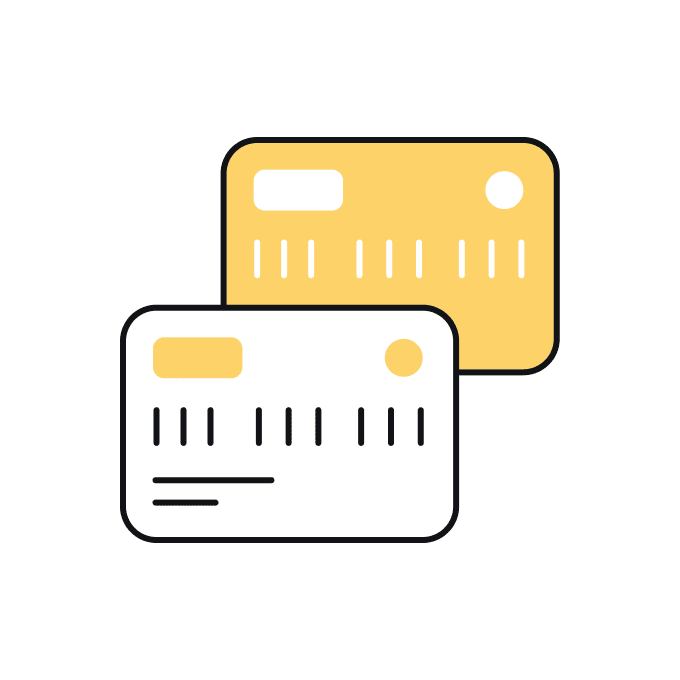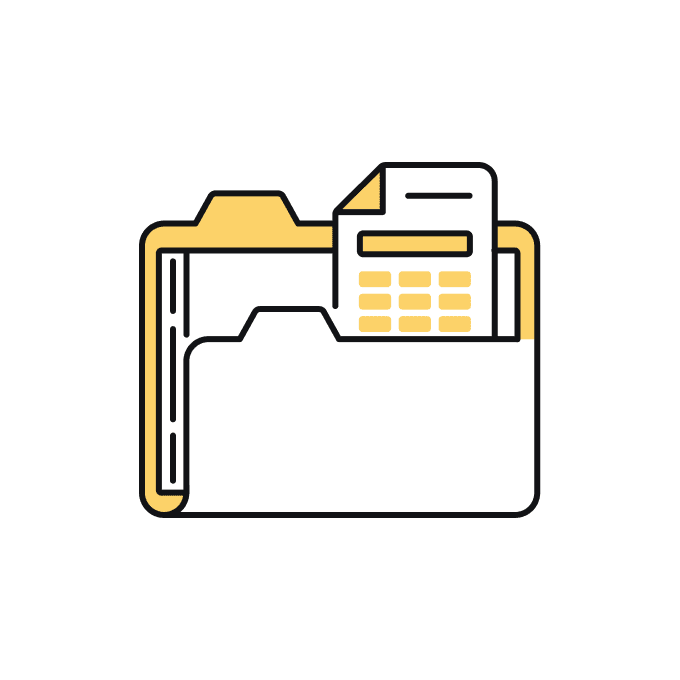
You can’t run a healthy, successful business without having your books in order. Think of it like driving a car without a fuel gauge or a map: sooner or later, you’re going to get lost or run out of gas. In this guide, we’ll walk you through bookkeeping basics: what it is, why it matters, and how to start doing it yourself.
Siri: Define ‘bookkeeping’
Bookkeeping is the process of tracking all of your company’s financial transactions. This usually occurs by entering them into accounting software or a physical set of “books.”
It lets you see exactly where your business is spending money, where your revenue is coming from, and which tax deductions you’ll be able to claim.
Why bookkeeping matters
1. You need it to do your taxes
You need to know your net profit in order to do your taxes. To figure that out, you need to know your total income and expenses. And the only way to know that for sure is to have accurate, up-to-date books.
2. It tells you where your money is going
Getting your books together by using a free month of bookkeeping is the only way to gauge the financial health of your small business.
Are sales up? Are your shipping costs too high? Will you have enough money next month to cover the payroll? Is cash flow increasing or decreasing? The only way to know for sure is to start bookkeeping.
3. It ensures that you don’t miss out on tax deductions
Keeping an up-to-date set of books is the best way to track tax deductions (expenses that you can deduct from your taxable income).
The more information (and supporting documents) you can give your CPA, the more deductions you’ll be able to legitimately claim. Thus, the bigger your tax return will be.
The IRS also has pretty stringent recordkeeping requirements for any deductions you claim. So, having your books in order can remove a huge layer of stress if you ever get audited.
4. You need it to borrow money
If you need to borrow money from someone other than friends and family, you’ll need to have your books together. Doing so lets you produce financial statements. These are often a prerequisite for getting a business loan, a line of credit from a bank, or a seed investment.
Lenders and investors want a clear idea of your business’s financial state before giving you money. They can’t do that without looking into things like revenue, cash flow, assets, and liabilities. They’ll then search for these on your balance sheet, income statement, and statement of cash flows.
5. It helps you catch errors quickly
If you wait until the end of the year to get your financial transactions in order, you won’t know if you made a mistake. Before you know it, you’re buried in paperwork at tax time.
Regularly organizing and updating your books can help you catch that erroneous overdraft fee today, rather than six months from now when it’s too late to bring it up.
Where to start
The first seven steps of a bookkeeping process
We’re making it sound easier than it is. When you’re stuck in the minutiae of reconciling your transactions, this won’t feel like “seven easy steps”.
For the sake of explaining the basics of bookkeeping, here are the first seven steps you’ll need.
Step 1: Separate your business and personal expenses

The first step to mastering your business finances is pretty simple: get a business bank account, separating your business and personal expenses.
Why? Liability is one big reason.
If you’re running a corporation with no sufficient distance between your finances, there’s a chance you could be held liable for debts incurred by your business.
Mixing personal and business expenses in the same account can also result in unnecessary stress when filing taxes or bookkeeping. It could mean a business expense gets lost in your personal account and you miss out on a critical deduction.
Or, it could mean your CPA spends more time doing your taxes. Either way, you end up losing money.
Step 2: Choose a bookkeeping system

There are two main bookkeeping methods: single-entry and double-entry bookkeeping.
Under a single entry, journal entries are recorded once, as either an expense or income. Assets and liabilities (like inventory, equipment, and loans) are tracked separately. If you’re just starting out and are still in the hobby stage, single-entry is probably right for you. It’s simple, fast, and good for really basic bookkeeping.
Double-entry is more complex, but also more robust, and more suitable for established businesses that are past the hobby stage.
Under double-entry bookkeeping, all transactions are entered into a journal. Each item is then entered into the general ledger twice, as both a debit and a credit.
Most accounting software today is based on double-entry accounting. If you ever hire a bookkeeper or accountant to help you with your books, double-entry is what they’ll use.
Step 3: Choose an accounting method: Cash or Accrual

You have another important decision to make when setting up your bookkeeping. Do you make your accounting process cash or accrual based?
Under cash accounting, you record transactions only once money has exchanged hands. If you bill a customer today, those dollars don’t enter your ledger until the money hits your bank account.
Many small businesses opt for the cash basis of accounting. This is because it’s easy to maintain, doesn’t require you to track receivables or payables, and tells you exactly how much cash you have on hand at any given point in time.
Using the accrual accounting method, you record income when you bill your customers. This is in the form of accounts receivable (even if they don’t pay you for a few months). The same goes for expenses, which you record when you’re billed in the form of accounts payable.
Generally speaking, accrual accounting is better for larger, more established businesses. It gives you a more realistic idea of your business’ income and provides a long-term view of the business that cash accounting can’t provide.
Step 4: Choose the right tools

Every transaction you make needs to be categorized when it’s entered into your books. This helps your bookkeeper catch more deductions, and will make your life easier if you get audited.
Six months later, an unmarked receipt for lunch at a restaurant might not mean much to you. Was it a client lunch? Did you treat your employees after a successful quarter?
The way you categorize transactions will depend on your business and industry. Generally speaking, your transactions fall into five account types—assets, liabilities, equity, revenue, and expenses. Individual line items are then broken down into subcategories called accounts. In our ice cream shop example, some accounts in your ledger might be “revenue-ice cream sales”, “expenses-ice cream ingredients”, etc.
These days, you’ve got three options when it comes to bookkeeping basics.
You could go with one of the dozens of popular cloud accounting solutions, like QuickBooks, Xero, or Wave. These tools can be powerful if you know what you’re doing.
However, if you don’t have a lot of bookkeeping experience (or don’t have time to learn), they could stress you out more than they help you. Especially if your accountant ends up telling you you’ve been using them incorrectly for the past year.
You could also do everything via spreadsheet, using tools like our free Excel Income Statement Template
Finally, if you want someone else to do your bookkeeping basics for you, you could sign up for a cloud-based bookkeeping service like Bench. We’ll do your bookkeeping for you, prepare monthly financial statements, give you expense reports with actionable financial insights, and we’ll even file your taxes for you when the time comes. It’s a one-stop shop.
Step 5: Make sure your transactions are categorized

Every transaction you make needs to be categorized and entered into your books. This helps your bookkeeper catch more deductions, and will make your life easier if you get audited.
Remember: an unmarked receipt for lunch at a restaurant might not mean much to you six months later. Was it a client lunch? Did you treat your employees after a successful quarter? Properly categorizing and recording your transactions can help you avoid doing all of this extra investigative work later.
If you’re going to be doing your own bookkeeping, it’s worth talking to a pro when you set up your system. Make sure the accounts you create align with your industry standards, bookkeeping basics, and CPA expectations.
Step 6: Choose a system for storing your documents

At tax time, the burden is on you to show the validity of all of your expenses, so keeping supporting documents for your financial data like receipts and records is crucial.
Diamonds may be forever, but the ink on your expense receipts is not. Since the IRS accepts digital records, it’s smart to use a cloud-based system like Dropbox, Evernote, or Google Drive so you never have to deal with smudged receipts.
If Bench does your bookkeeping basics, you can also upload and store as many digital receipts and documents as you’d like in the Bench app.
Step 7: Organize your deductions

The IRS’ golden rule on deductions is that they must be both ordinary (a common expense in your field) and necessary to your business. For example, pens would be a regular expense for a writer, but a $900 pen might not fall into the category of “necessary.”
But even if an expense is ordinary and necessary, you may still not be able to deduct all of it from your taxes. Just because you do most of your work from your dining room table doesn’t mean that you can deduct your entire monthly rent. Luckily, the IRS has put together a comprehensive guide on business deductions that you can consult if you’re ever unsure about the bookkeeping basics.
Step 8: Make bookkeeping a habit

If you’re a busy small business owner with a million things to do, it’s easy to let bookkeeping basics fall by the wayside. One way to avoid that is to make it a habit.
Try setting aside and scheduling a ‘bookkeeping day’ once a month to stay on top of your financials. Use that day to enter any missing transactions, reconcile bank statements, review your financial statements from the last month and make any major changes to your accounting or bookkeeping.
If you’re months or years behind, you might want to get a bookkeeper to do some catch-up bookkeeping for you (Bench can help with that).
DIY vs. professional bookkeeping
Most small businesses will either do their books themselves or outsource the work to a professional. Here is how to choose which method is best for you.
The DIY approach
If your business is a side project with a limited budget, you can probably get it by going the DIY route.
You might still consider consulting with a CPA or bookkeeper at the beginning, just to make sure you’re doing everything right. But most businesses in the hobbyist stage can get by using either a simple spreadsheet (like our free Income Statement Template) or one of the many accounting or bookkeeping software solutions on the market.
Outsourcing to a professional
And there you have it! The ultimate list of bookkeeping basics for your business.
If bookkeeping keeps getting pushed aside as your business starts growing and you simply can’t find the time to get your books in order every month, you should consider hiring a professional to help you.
Our bookkeepers here at Bench can do your books for you entirely online. We’ll also give you simple software to produce financial statements, keep track of your daily expenses, and help make tax time a breeze.
Ready to outsource your bookkeeping, so you can focus on your business? Start Your Free Trial
Ready to hire? Our marketplace of over 410,000 diverse freelancers has the skills and expertise needed to skyrocket your business. From marketers to designers, copywriters to SEO experts – browse the talented bunch here!




